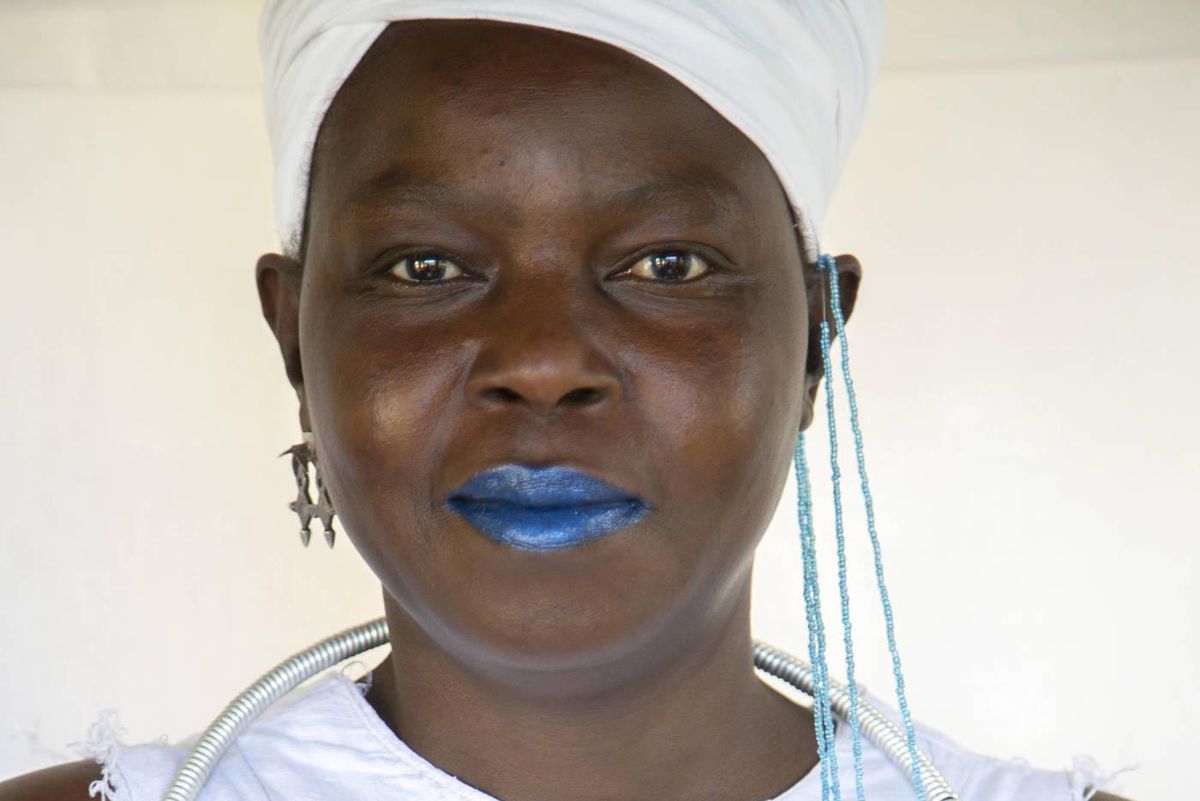Spotlight: Mozambican Lizette Chirrime On Stumbling Into Artistry
Chirrime's latest exhibition, Rituals for Soul Search embodies the artist's desire to bring audience members closer to nature, the Universe, and their souls.

In our 'Spotlight' series, we highlight the work of photographers, visual artists, multimedia artists, and more who are producing vibrant, original work.
In our latest piece, we spotlight Mozambican textile artist, Lizette Chirrime. The self-taught multidisciplinary artist channels her trauma and longing to be whole through her artwork. "These abstract forms evoke the human body and my identity-responsive practice where I refashion my self-image and transcend a painful upbringing that left me shattered and broken. I literally ‘re-stitched’ myself together. These liberated ‘souls’ are depicted ‘dancing’ on the canvas, bringing to mind, well-dressed African women celebrating", Chirrime says in her own words. The artist uses her creations to communicate the beauty in simplicity, and the divinity of being African.
We spoke with the Chirrime about accidentally finding her medium of choice, using color to express emotions, and focusing your energy on being awesome.
Responses have been edited for length and clarity.
Describe your background as an artist and the journey you've taken to get it to where it is today.
When I started, I had no idea that I was an artist. I loved to create beautiful environments wherever I went, and when people noticed, they began giving me that title. I was using techniques that deviated from what was common at the time, particularly working with recycled materials, which I think situated me as a creative within my communities.
What are the central themes in your work?
Womanhood, Mother Earth, love, awesomeness, and spirituality.
How did you decide on using textiles to express your art?
It all started when I began working with hessian fabric, mainly, deciding to change the way it was treated in many houses. I gave it more life and a better look, and when the healing was done, I moved on to colorful fabrics in search of joy and life.
In the early 2000s, I began working with scrap materials, having been compelled to create a doll from textiles one evening. I fell in love with the medium and haven’t stopped creating since, though the way in which I utilize textiles continues to evolve.
Can you talk about your use of colors and symbolism in your art?
I use the colors I do — shades of red, blue, and green — because they remind me of beauty. They’re the vehicles I use to both express my feelings and describe certain narratives behind my expression. Symbolically, I look to nature for inspiration and translate the environment around me into symbols within my pieces. Looking to nature helps to find one’s place within the universe, and I want to help people see the value in slowness and simplicity. I hope that my work helps people appreciate how miraculous our planet is and inspires them to heal the earth from destruction.
How has the pandemic affected you creatively?
I relocated to Mozambique during the pandemic, after living in South Africa for many years, and have felt an incredible shift in my capacity to be present. Being removed from a city and with a slower pace of life, I’ve been able to reconnect with myself and have a direct conversation with my spirit and soul, which directly feeds into my work and the current ideas which I’m exploring.
Luckily, I didn’t feel very affected by the pandemic because I’ve had a few sponsors and continued to sell my artwork through that time. Though I didn’t sell as much as I did prior, I still managed to pay my bills, eat and create — I’m thankful to have met my needs as an artist.
- Spotlight: Virtuoso Masters The Art of Cape Verdean Style - OkayAfrica ›
- Spotlight: Ethopia's Kunjina Is On A Fashion Metamorphosis ... ›
- Spotlight - OkayAfrica ›
- Spotlight: Timi Nathus Is Making Digital Art Mainstream - OkayAfrica ›
- 3D Artist Nurdin Momodu Is Using Animation To Share African Ingenuity - OkayAfrica ›








